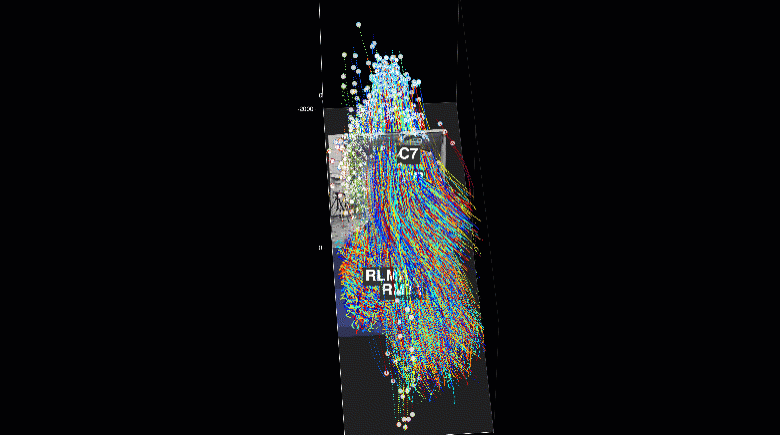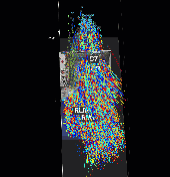
Conventional methods to generate ground reaction forces and moments (GRF/M) required for traditional inverse dynamics estimation of athlete joint forces and loads are confined to biomechanics laboratories far removed from the sporting field of play. This has been an ongoing frustration for sports biomechanists, who must forego the ecological validity of field-based data collections and manage the constraints of artificial laboratory environments to accurately model musculoskeletal loading parameters. To extricate the biomechanist’s reliance on ground embedded force plates, this study sought to improve on an earlier Partial Least Squares (PLS) approach by using deep learning to predict 3D GRF/M from legacy marker-based motion capture sidestepping trials, ranking correspondence of multivariate regression from five convolutional neural network (CNN) models against ground truth data. In a possible first for biomechanics, tactical feature engineering techniques were used to flatten space-time and facilitate fine-tuning from three pre-trained CNNs, from which a model derivative of ImageNet called ‘CaffeNet’ achieved the strongest average correlation to ground truth GRF/Ms r(Fmean) 0.9881 and r(Mmean) 0.9715 (rRMSE 4.31 and 7.04 %). The success of using CNN models to predict GRF/M output for a dynamically complex task advances the project beyond the earlier limitations of PLS and already offers the possibility of use-cases for biomechanical analysis where a force plate is undesirable (or unavailable). These results demonstrate the power of CNN models to facilitate real-world multivariate regression with practical application for spatio-temporal sports analytics. Subsequent research using kinematics derived from wearable sensors will also serve to liberate biomechanists from laboratory constraints and make accurate multidimensional in-game player analyses a reality. Models are publicly available at https://github.com/johnsonwr/digitalathlete.

